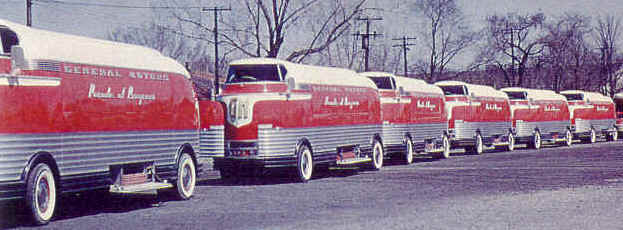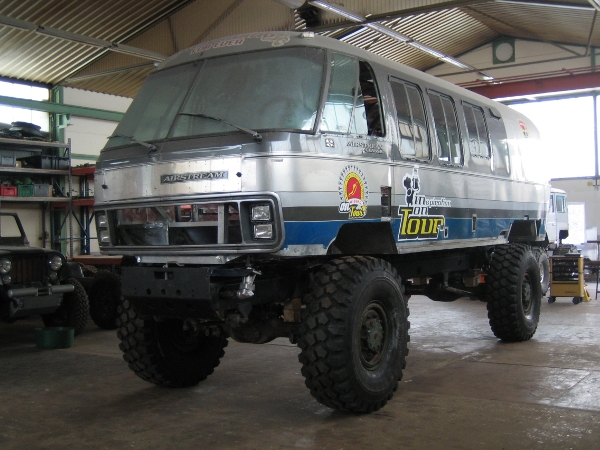biotect
Designer
Hi egn,
Thanks so much for all your responses to questions about internal appliances, etc. Some interesting surprises – for instance, that you don't see much point to a water-efficient shower-head. Or that you don't like diesel cook-tops, and that they have altitude limitations. Really interesting.
And yes, I agree about objects flying around in a fridge. I was imagining that most food would be stored in transparent “sub-containers”, as per one of the refrigerators made by Rieber – see http://www.rieber.de/en/home/item/g...oller/Frontend/action/detail/path/119,29,4,2/ :

These containers are snugly fixed on racks so they can't move. Of course, bottles and cartons and all kinds of other things have to be stored as well. But makers of commercial fridges will produce wire baskets, for instance, that can help with the organization of such items; wire baskets that "slot" into fixed runners in their fridges, much like the Rieber just pictured. The challenge is not so much to create a new off-road fridge interior, as it is to configure the interior well with existing storage/organization systems. But I'll need to investigate this further; thanks for reminding me that this is an important issue!
Did you know: Rieber makes a “Vaculid” system of easily storable, flat containers that seem to preserve food for months – see http://www.rieber.de/en/home/item/d...ontroller/Frontend/action/detail/path/28,3,2/ . The end of the following video shows how it works. The thing that looks like a drill, is a suction-gun:
This video depicts the same vacuum system:
I really like these trays because they are flat, whereas I am not sure how I would place a meal inside a jar?
I will get to your other points in later posts. But again, many thanks.
***********************************
Just two quick questions about the overall design:
1. CBE versus COE
Honestly, the primary reason why a CBE placement seems necessary, is because of the rear hydraulic deck, which you mentioned as a desirable option that you had also considered. A “pusher” engine placement is not compatible with a rear deck. So as you suggested earlier, the only remaining options are either COE, or some kind of electric/hybrid arrangement.
But the problem with COE is that the cab has to tilt forward, and if it does, then a full-length Pop-Up is probably no longer possible. Much of the value of an integrated design thereby gets lost. grizzlyj described how the floor of the “over-cab” or alcove on his Unimog sort of pops up out of the way, thereby giving his cab the room it needs to tilt forward. That way the surrounding structure of the alcove can remain in place. But this seems worrisome if the bed is supposed to be there, too, and ideally, remain undisturbed. For the problem explained visually, please see my post at the top of page 12, at http://www.expeditionportal.com/for...pedition-RV-w-Rigid-Torsion-Free-Frame/page12 . And for grizzly's explanation of how his Unimog solves the problem, please see his post near the bottom of page 12.
The only other alternative would seem to be some kind of COE design that provides mechanical access to the engine via an extra-large opening in the engine tunnel. The following video clip of the “Decoliner” featured on “Jay Leno's Garage” illustrates this nicely:
What do you think?
If it turns out that electric/hybrid development is not yet advanced enough to risk making it a propulsion system for a long-range off-road vehicle, then would this sort of "engine-tunnel access" to a COE diesel engine strike you as good enough?
2. Split-Level first floor
Second, do you think a "split level first floor" would be possible, with the front 6 m of the first floor at 1.35 m above grade, and the remaining 3.5 m of the first floor in the rear at 1.6 m above grade? Do you think that the SX-45 or the Tatra chassis would be stiff enough to allow for this kind of arrangement?
And finally, if you have time to look at the Tatra elevations, does it also seem to you that the frame of the Tatra 815 only rises to about 1.17 m or 1.18 m above grade? Can the Tatra 815 frame really be this low? Because the H3 measurement for a MAN KAT seems to be almost 10 cm higher, at 1.25 m above grade with Michelin 14.00 R20 tires. Please see the post labeled number "9", on page 15 - http://www.expeditionportal.com/for...pedition-RV-w-Rigid-Torsion-Free-Frame/page15 for further explanation.
All best wishes, and again, thanks,
Biotect
Thanks so much for all your responses to questions about internal appliances, etc. Some interesting surprises – for instance, that you don't see much point to a water-efficient shower-head. Or that you don't like diesel cook-tops, and that they have altitude limitations. Really interesting.
And yes, I agree about objects flying around in a fridge. I was imagining that most food would be stored in transparent “sub-containers”, as per one of the refrigerators made by Rieber – see http://www.rieber.de/en/home/item/g...oller/Frontend/action/detail/path/119,29,4,2/ :

These containers are snugly fixed on racks so they can't move. Of course, bottles and cartons and all kinds of other things have to be stored as well. But makers of commercial fridges will produce wire baskets, for instance, that can help with the organization of such items; wire baskets that "slot" into fixed runners in their fridges, much like the Rieber just pictured. The challenge is not so much to create a new off-road fridge interior, as it is to configure the interior well with existing storage/organization systems. But I'll need to investigate this further; thanks for reminding me that this is an important issue!
Did you know: Rieber makes a “Vaculid” system of easily storable, flat containers that seem to preserve food for months – see http://www.rieber.de/en/home/item/d...ontroller/Frontend/action/detail/path/28,3,2/ . The end of the following video shows how it works. The thing that looks like a drill, is a suction-gun:
This video depicts the same vacuum system:
I really like these trays because they are flat, whereas I am not sure how I would place a meal inside a jar?
I will get to your other points in later posts. But again, many thanks.
***********************************
Just two quick questions about the overall design:
1. CBE versus COE
Honestly, the primary reason why a CBE placement seems necessary, is because of the rear hydraulic deck, which you mentioned as a desirable option that you had also considered. A “pusher” engine placement is not compatible with a rear deck. So as you suggested earlier, the only remaining options are either COE, or some kind of electric/hybrid arrangement.
But the problem with COE is that the cab has to tilt forward, and if it does, then a full-length Pop-Up is probably no longer possible. Much of the value of an integrated design thereby gets lost. grizzlyj described how the floor of the “over-cab” or alcove on his Unimog sort of pops up out of the way, thereby giving his cab the room it needs to tilt forward. That way the surrounding structure of the alcove can remain in place. But this seems worrisome if the bed is supposed to be there, too, and ideally, remain undisturbed. For the problem explained visually, please see my post at the top of page 12, at http://www.expeditionportal.com/for...pedition-RV-w-Rigid-Torsion-Free-Frame/page12 . And for grizzly's explanation of how his Unimog solves the problem, please see his post near the bottom of page 12.
The only other alternative would seem to be some kind of COE design that provides mechanical access to the engine via an extra-large opening in the engine tunnel. The following video clip of the “Decoliner” featured on “Jay Leno's Garage” illustrates this nicely:
What do you think?
If it turns out that electric/hybrid development is not yet advanced enough to risk making it a propulsion system for a long-range off-road vehicle, then would this sort of "engine-tunnel access" to a COE diesel engine strike you as good enough?
2. Split-Level first floor
Second, do you think a "split level first floor" would be possible, with the front 6 m of the first floor at 1.35 m above grade, and the remaining 3.5 m of the first floor in the rear at 1.6 m above grade? Do you think that the SX-45 or the Tatra chassis would be stiff enough to allow for this kind of arrangement?
And finally, if you have time to look at the Tatra elevations, does it also seem to you that the frame of the Tatra 815 only rises to about 1.17 m or 1.18 m above grade? Can the Tatra 815 frame really be this low? Because the H3 measurement for a MAN KAT seems to be almost 10 cm higher, at 1.25 m above grade with Michelin 14.00 R20 tires. Please see the post labeled number "9", on page 15 - http://www.expeditionportal.com/for...pedition-RV-w-Rigid-Torsion-Free-Frame/page15 for further explanation.
All best wishes, and again, thanks,
Biotect
Last edited:





































































